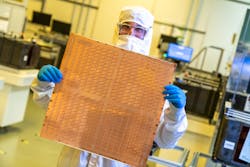What you’ll learn:
- What will be in this year’s Electronic Design Innovators issue?
- What are some of the major disruptions that will occur in 2024?
In some ways, 2024 will be a repeat of 2023 but only worse when it comes to disruptive technologies and a changing landscape. This is in part due to the rapid maturing of technologies from artificial intelligence/machine learning (AI/ML) to GaN- and SiC-enabled power supplies. In the past, any disruption was due to planning for future possibilities.
These days, some of the guessing becomes foregone conclusions as these new technologies are available. Unfortunately, they’re not standing still. Large-language-model (LLM) generative AI is becoming better at what it does, but it's also being utilized in different application areas.
Technologies like PCI Express Gen 5 enable related technologies like CXL, which are changing the ways that data centers are designed. Chiplets and glass substrates may make chiplet-based solutions more economical (see figure). We could talk about everything from microLEDs to augmented reality/virtual reality (AR/VR) technology, but this list keeps going on and on. It’s what we report on a daily basis at Electronic Design.
Many of these technologies will be covered in our Innovators issue this year, which also addresses disruptive technologies such as those already mentioned. On top of that, the issue includes a few profiles of innovators in the industry. It’s a short list due to space limitations, so it touches on a very small fraction of innovators worth recognizing—especially given that much of the technological disruption is driven by technical innovators among a large array of companies.
The effects of COVID have not worn off and work-from-home along with a distributed work force has had its good and bad effects. Disruptions due to global turmoil are worsening. This isn’t just a supply-chain issue—it’s an intellectual one as well. Developers, designers, testers, and support personnel may be located in countries affected by this turmoil. Like a critical chip in a design, these people can be just as critical to a product’s success.


